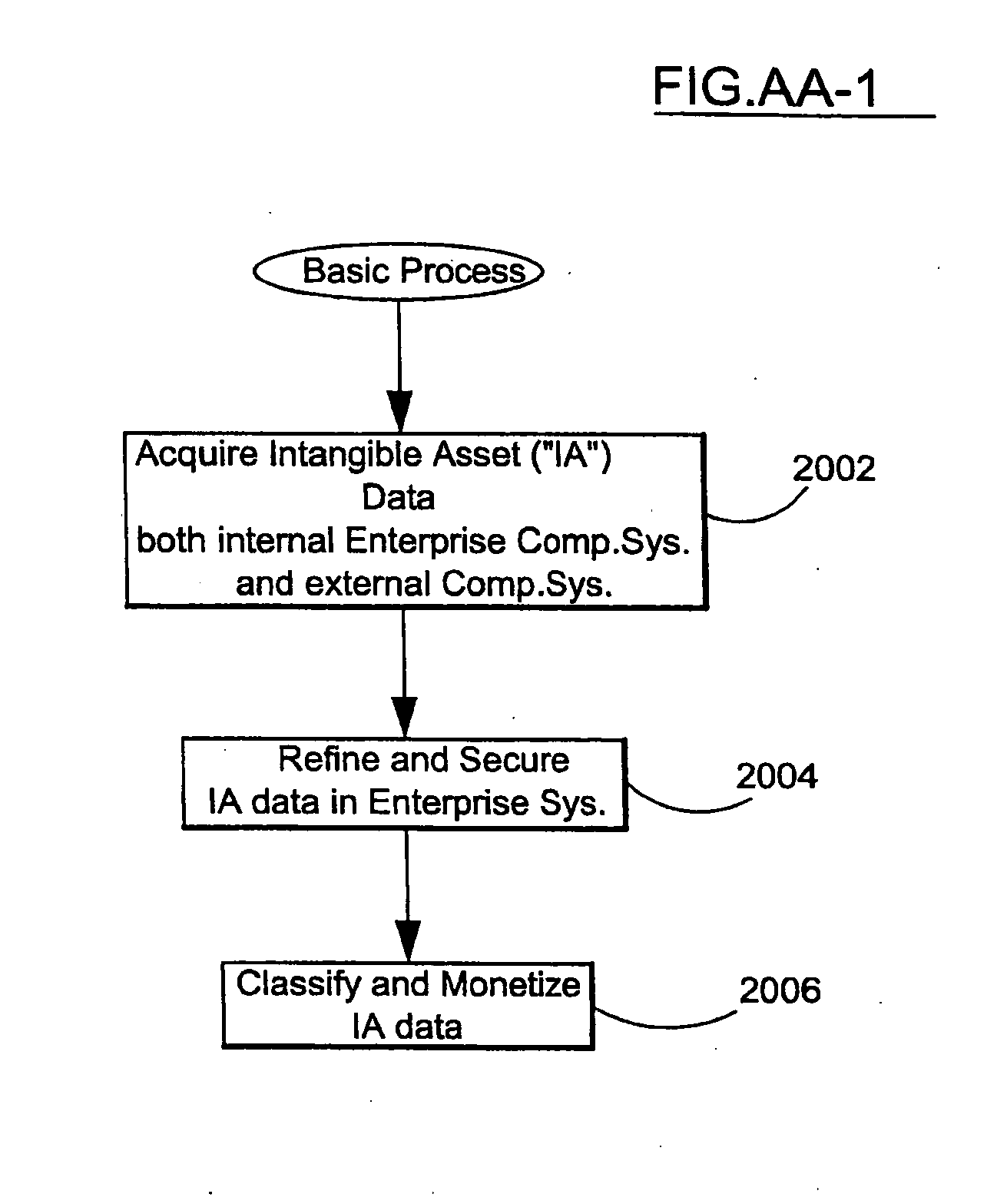System and method to identify, classify and monetize information as an intangible asset and a production model based thereon
a technology of information and production models, applied in the field of system and method to identify, classify and monetize information as an intangible asset and a production model based thereon, can solve the problems of loss of trade secret data and information which can be classified as valuable intangible assets (i.a.) and society is not ready to deal with an intangible economy. , the methodology is very conservativ
- Summary
- Abstract
- Description
- Claims
- Application Information
AI Technical Summary
Benefits of technology
Problems solved by technology
Method used
Image
Examples
example
Multiple Level Encryption
[0486]
Applicants must be zzxx xx xxx citizens andhave a high school diploma or equivalent. They must possess a validsubsubsub driver's license and qualify for top SUBWORD clearance.
[0487]With this multiple level encryption, substitutions may be utilized “subword” to indicate to the user with a less than superior security level that a certain word, term or phrase has been extracted and stored by he or she is entitled to know that substitute word, term or phrase has been inserted into the plain text document. Of course, any type of substitution character may be used for the placeholder.
[0488]In step 432, the system displays the plain text in a normal format or utilizing a split or bifurcated video memory or utilizing overlay display screen. FIG. B-3 and the description of that figure set forth above describes the normal display in steps 202, 204, the split video memory display in steps 206, 208, 210 and 212 and the overlay display system in steps 2...
PUM
 Login to View More
Login to View More Abstract
Description
Claims
Application Information
 Login to View More
Login to View More - R&D
- Intellectual Property
- Life Sciences
- Materials
- Tech Scout
- Unparalleled Data Quality
- Higher Quality Content
- 60% Fewer Hallucinations
Browse by: Latest US Patents, China's latest patents, Technical Efficacy Thesaurus, Application Domain, Technology Topic, Popular Technical Reports.
© 2025 PatSnap. All rights reserved.Legal|Privacy policy|Modern Slavery Act Transparency Statement|Sitemap|About US| Contact US: help@patsnap.com



